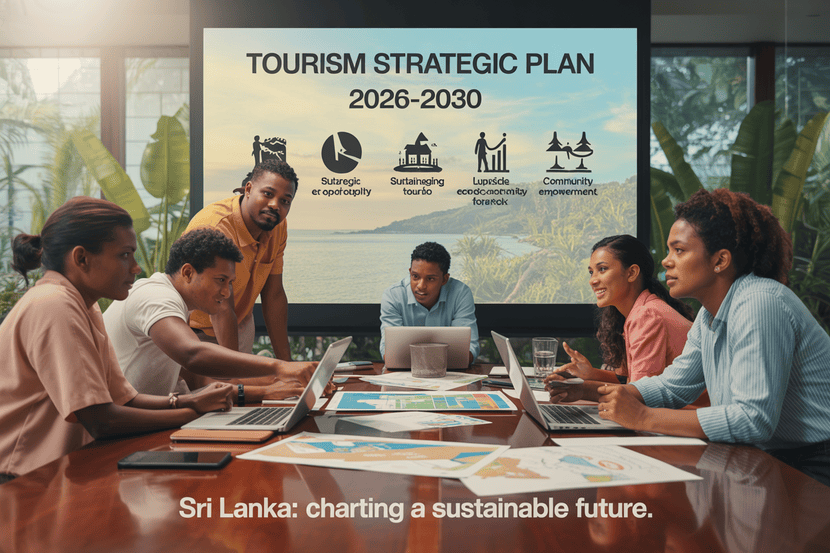≡-US, Japan, Thailand and India In Focus as Philippines Eyes New Aviation Deals to Accelerate Tourism Growth – Viral of Today
<> Viral of Today <>
Home » America Travel News » US, Japan, Thailand and India In Focus as Philippines Eyes New Aviation Deals to Accelerate Tourism Growth Friday, July 11, 2025The Philippines is actively advancing aviation negotiations with the US, Japan, Thailand, and India as part of an ambitious initiative to broaden global flight connectivity and boost foreign tourist arrivals. These targeted talks aim to strengthen bilateral aviation ties, improve market access for local and foreign carriers, and respond to mixed first-quarter arrival trends from these key markets. By enhancing air connectivity with these high-potential tourism partners, the Philippines seeks to increase visitor volumes, support its 2025 tourism targets, and stay competitive in Southeast Asia’s rapidly evolving travel landscape.In a decisive move to strengthen its aviation landscape and reinforce its appeal to global travelers, the Philippines is set to begin high-level air service negotiations with four of its key international markets—Japan, India, Thailand, and the United States. These talks are part of a broader national strategy to enhance air connectivity and position the country as a competitive travel destination within Southeast Asia and beyond.As global travel rebounds and regional rivalry escalates, the Philippines is actively pursuing fresh strategies to enhance inbound tourism and strengthen its position in the competitive Asian market. Central to this effort is the planned series of bilateral discussions that could pave the way for expanded flight frequencies, new route authorizations, and enhanced commercial opportunities for both local and foreign carriers.Positioning the Philippines in a Crowded MarketThe Philippines finds itself competing with regional neighbors such as Thailand, Vietnam, Malaysia, and Indonesia, all of whom have been aggressive in reopening travel, signing new aviation agreements, and promoting tourism. To remain a top contender in the regional tourism race, Manila must bolster its aviation infrastructure and eliminate existing barriers that limit air travel access from key source markets.The proposed negotiations with Japan, India, Thailand, and the United States are strategic in nature. These countries represent not only strong current tourist contributors but also markets with significant potential for future growth. Enhanced air service agreements with these nations could unlock broader benefits, such as improved seat availability, greater route diversity, and lower airfare costs for travelers.Government-Led Aviation DiplomacyThe upcoming talks will be led by the Philippine Air Services Negotiating Panel, a multi-agency group composed of senior representatives from the Civil Aeronautics Board, the Department of Tourism, the Department of Transportation, the Department of Foreign Affairs, Clark International Airport Corporation, and the nation’s airline industry.This collaborative framework ensures that aviation policy aligns with national tourism objectives, economic development goals, and diplomatic priorities. The panel’s mission will be to negotiate mutually beneficial agreements that foster sustainable growth, support local airline expansion, and align with the Philippines’ vision of becoming a regional aviation hub.Tourism Trends and Market Performance in Early 2025Travel statistics from early 2025 highlight the strategic importance of the US, Japan, Thailand, and India in the Philippines’ upcoming aviation negotiations.Japan emerged as a growth leader, delivering an impressive 18.14% increase in tourist arrivals year-over-year, reaching approximately one hundred thirty-two thousand five hundred visitors. This sharp uptick is largely attributed to increasing demand for island destinations, improved outbound travel policies in Japan, and promotional campaigns by Philippine tourism bodies.The United States, traditionally one of the Philippines’ strongest source markets, also showed positive momentum. Visitor arrivals from the U.S. climbed by 8.99%, reaching nearly three hundred thirty-one thousand in the first three months of the year. Strong family ties, heritage travel, and improved airline capacity are believed to have fueled this growth.However, the data was not uniformly positive. India, despite being a rapidly emerging travel market, posted a 2.08% decline in arrivals, with fewer than thirty thousand travelers arriving in the period. This modest contraction highlights existing limitations in direct flight access, limited seat inventory, and potentially insufficient marketing efforts.Thailand, a regional neighbor, also saw a marginal dip of 0.33% in tourist arrivals, totaling just over fifteen thousand five hundred. This indicates a need for enhanced connectivity and route marketing to promote intra-ASEAN travel, which remains below its potential despite geographic proximity.Expanding Connectivity Through Bilateral AgreementsAt the heart of these air service negotiations is the drive to unlock new traffic rights, increase flight frequencies, and grant fifth freedom rights where possible. These actions would empower Philippine carriers to operate more international routes and allow foreign carriers greater access to Philippine destinations beyond Manila, including emerging secondary hubs such as Cebu, Clark, Davao, and Bohol.Expanded bilateral agreements are also expected to ease regulatory bottlenecks and encourage airline alliances, code-sharing arrangements, and the entry of new carriers into underserved routes. This could dramatically enhance traveler convenience and contribute to price competitiveness.Furthermore, greater route access is projected to create a ripple effect across related industries such as hospitality, food and beverage, ground transportation, and tour operations, ultimately driving job creation and regional economic development.India: A Key Frontier with Untapped PotentialIndia’s inclusion in the negotiation list underscores its importance as a long-term growth market. India’s fast-expanding middle-class, driven by rising incomes and increased digital access, is emerging as a major driver of outbound travel demand, fueling interest in overseas vacations, international conferences, and specialized healthcare trips abroad.Currently, direct flight options between Indian cities and the Philippines remain limited, typically requiring layovers in other hubs. Expanded bilateral air rights could pave the way for more direct services, potentially connecting metro cities like Mumbai, New Delhi, Bengaluru, and Chennai to major Philippine destinations.Enhanced access could help reverse the current decline in Indian tourist arrivals and support the Department of Tourism’s goal to diversify source markets beyond traditional Western ones.Thailand: Unlocking Intra-ASEAN GrowthDespite geographic proximity and ASEAN-level frameworks for integration, travel between Thailand and the Philippines remains underdeveloped. Negotiated improvements in air access could allow budget carriers and legacy airlines to strengthen route networks between Bangkok and key Philippine gateways.This would not only increase leisure travel but also business traffic, cultural exchanges, and student mobility within the ASEAN region. Given Thailand’s established role as a transit hub in Southeast Asia, new partnerships and codeshares could also be explored to create circular travel packages that include both countries.US: Strengthening a Historic LinkAs a nation with deep historic ties and a large diaspora, the United States is a foundational pillar of the Philippines’ inbound tourism strategy. While the market continues to perform well, there remains room for growth, particularly in expanding services beyond the typical U.S. West Coast routes.New direct flights from major East Coast cities such as New York, Washington D.C., and Miami, or from central states such as Texas and Illinois, could help broaden the travel demographic. Strengthening these links would also cater to the growing demand for VFR (Visiting Friends and Relatives) travel among Filipino-American communities.Enhanced agreements could simplify cargo transport, boost tourism packages for heritage travel, and promote joint destination marketing campaigns targeting North American travelers.Japan: A Blueprint for SuccessThe surge in Japanese arrivals reflects a successful mix of accessibility, affordability, and market-focused tourism campaigns. With more than one hundred thirty-two thousand Japanese tourists arriving in Q1 2025, Japan serves as a model for what can be achieved through effective bilateral coordination and investment in route development.Expanding air agreements further could enable greater connectivity to lesser-known Japanese cities, diversify travel segments, and encourage return visits from repeat travelers.Aligning with Tourism Targets for 2025 and BeyondThese upcoming negotiations are aligned with the Philippine Department of Tourism’s strategic roadmap, which aims to attract high-value tourists, promote sustainable tourism, and drive inclusive growth across the archipelago.By expanding connectivity to both traditional and emerging markets, the country aims to not only recover lost ground due to the global pandemic but also to leapfrog competitors in attracting new visitors. Increased air access, when combined with infrastructure development and destination marketing, will be critical to reaching 2025 tourism targets and establishing long-term resilience.Air Talks as Catalysts for TransformationAs the Philippines embarks on this ambitious round of air service talks, the outcome will likely shape its tourism and aviation future for years to come. These agreements are not mere diplomatic exercises—they are economic instruments that can influence where airlines fly, how frequently they operate, and what experiences global travelers can access.If successful, the Philippines could find itself better positioned to capitalize on regional and global tourism rebounds, drive aviation sector growth, and establish itself as one of Southeast Asia’s most accessible and attractive destinations.The Philippines is negotiating fresh air agreements with the US, Japan, Thailand, and India in its efforts to grow tourist inflows as well as global air connectivity. The strategic negotiations aim to promote tourism growth and make the Philippines more competitive in the regional air market.The country’s proactive stance, data-driven priorities, and focus on bilateral gains offer a promising blueprint for aviation diplomacy that delivers real, measurable value to its tourism economy and its people.
This information will surprise you!
See also
- Read until the end to discover everything.
- Important information you need to know.
- Interesting facts and helpful tips.
Conclusion
Did you enjoy the news? Keep following us daily!













